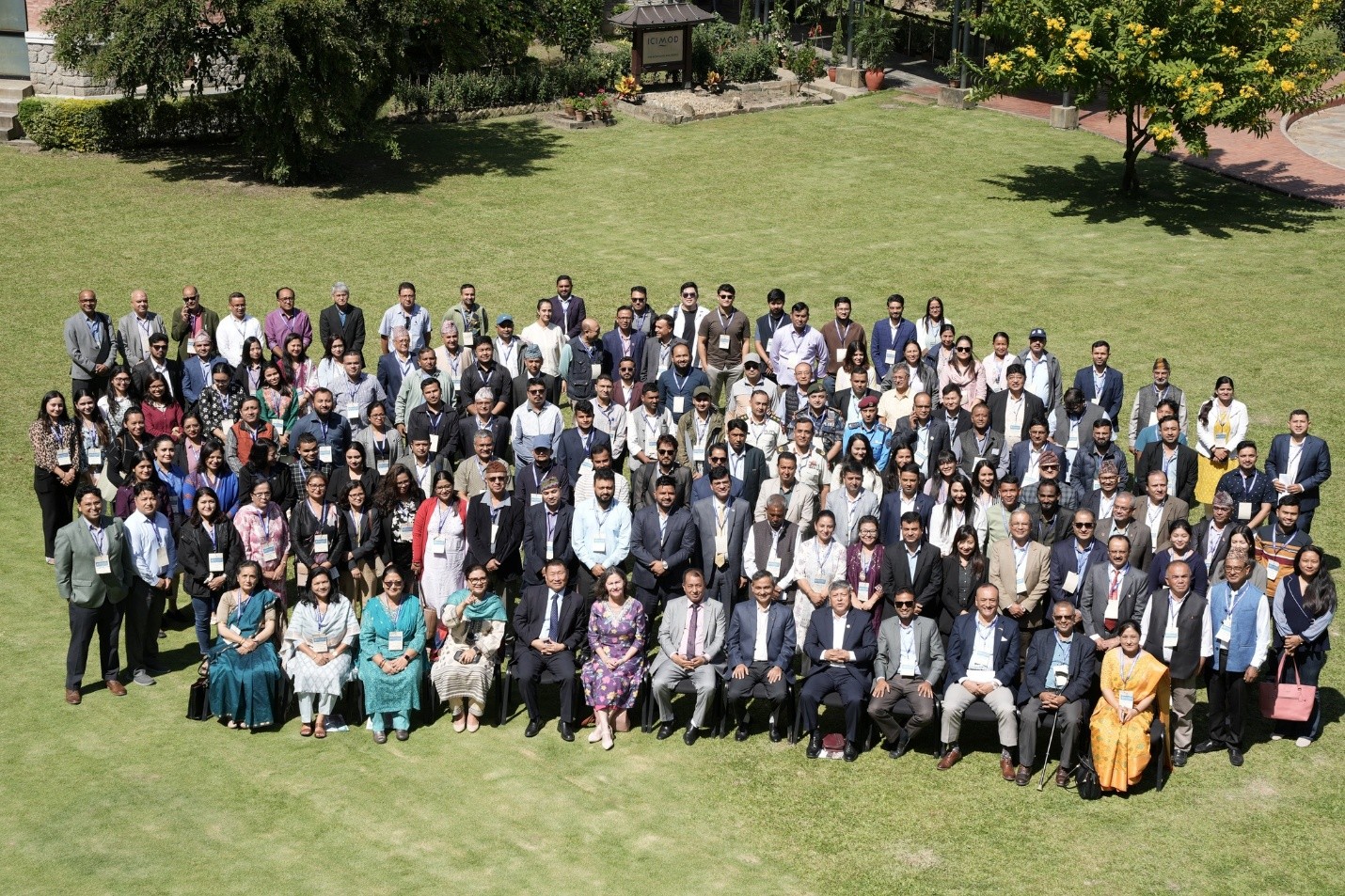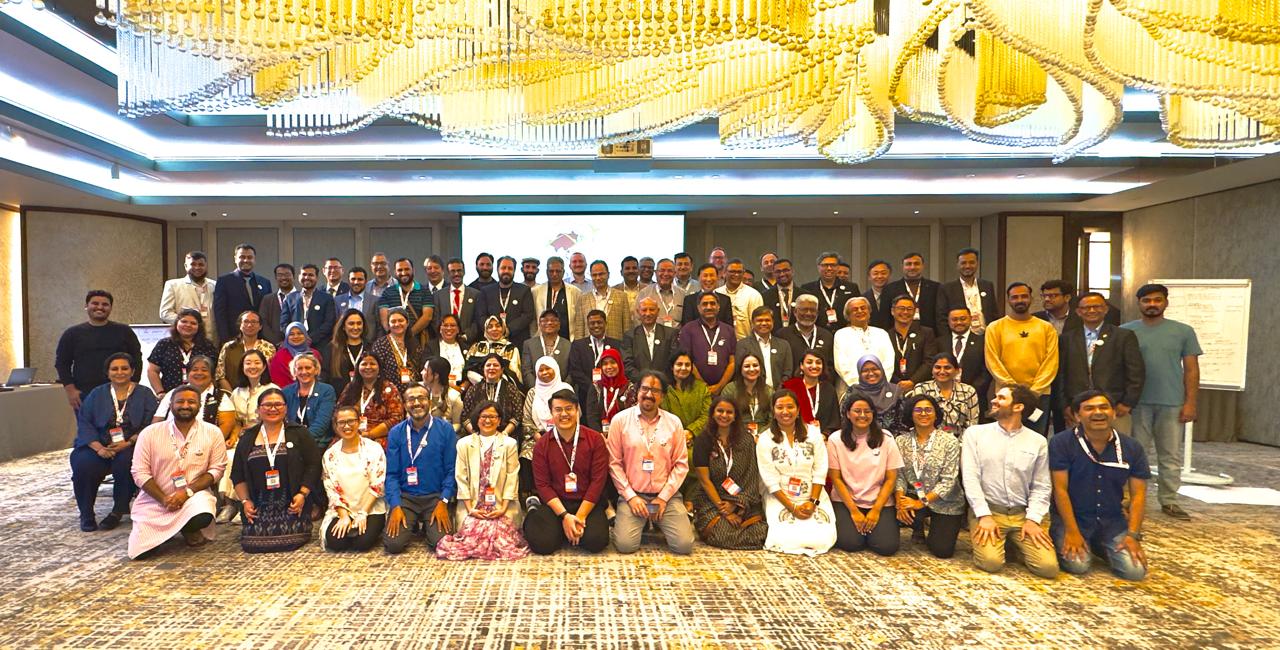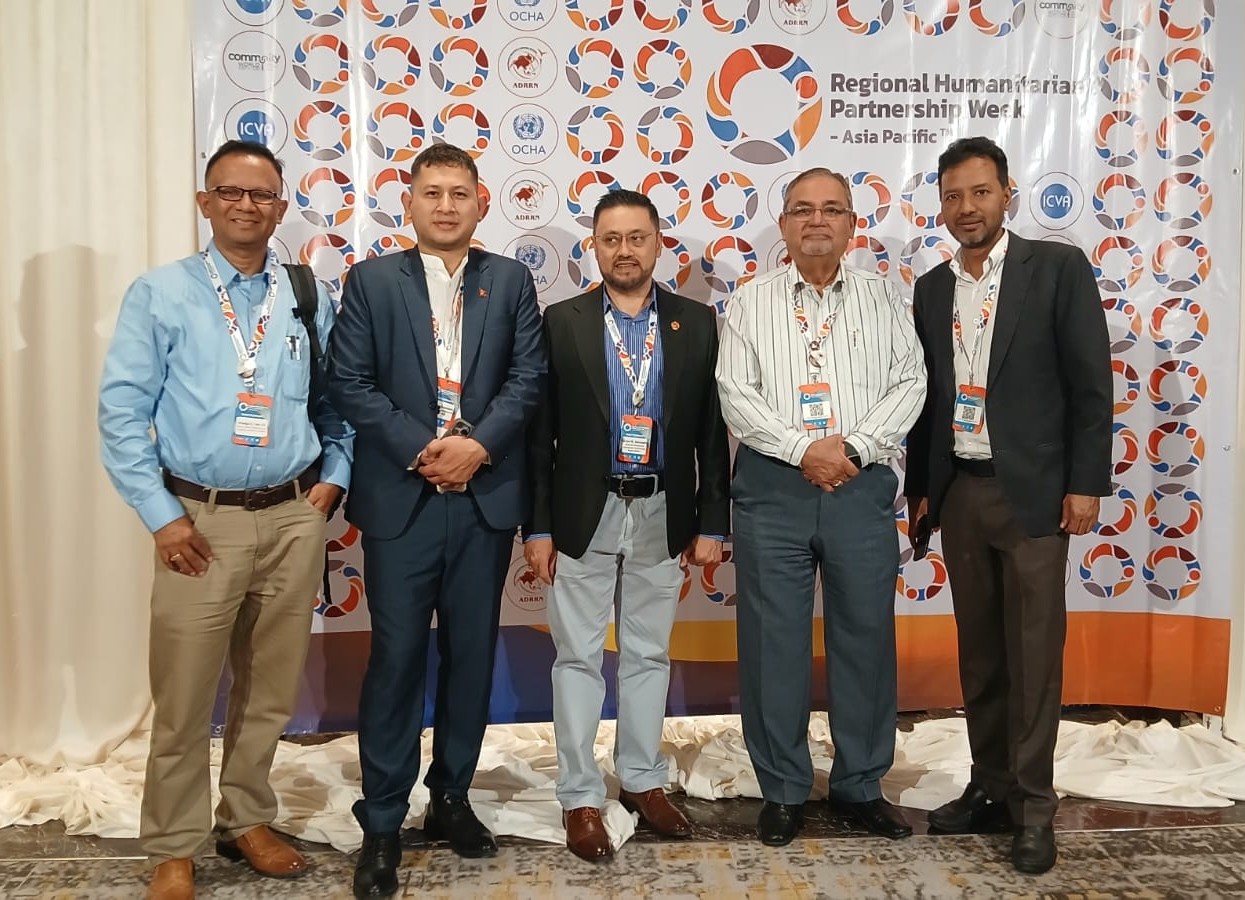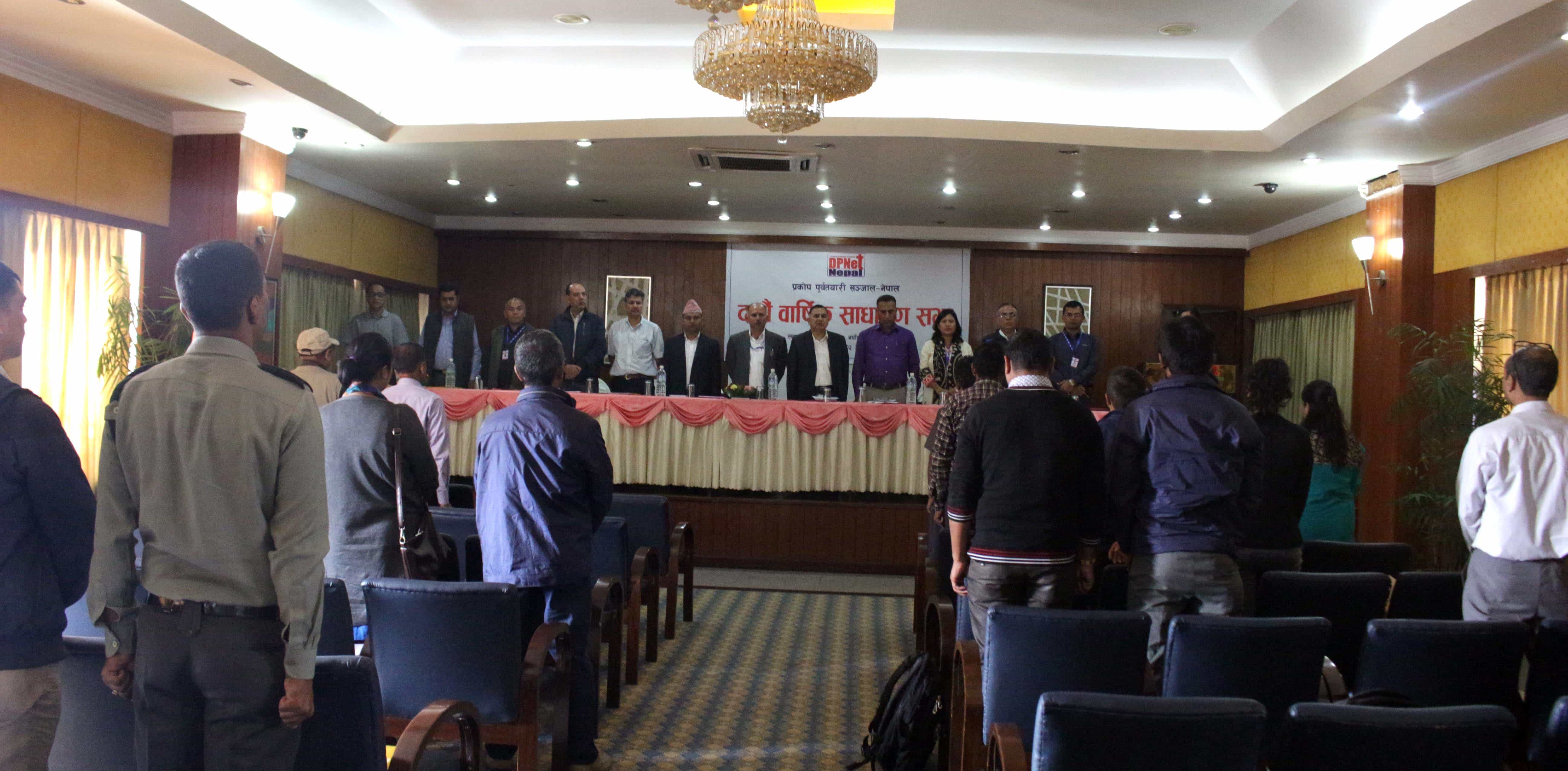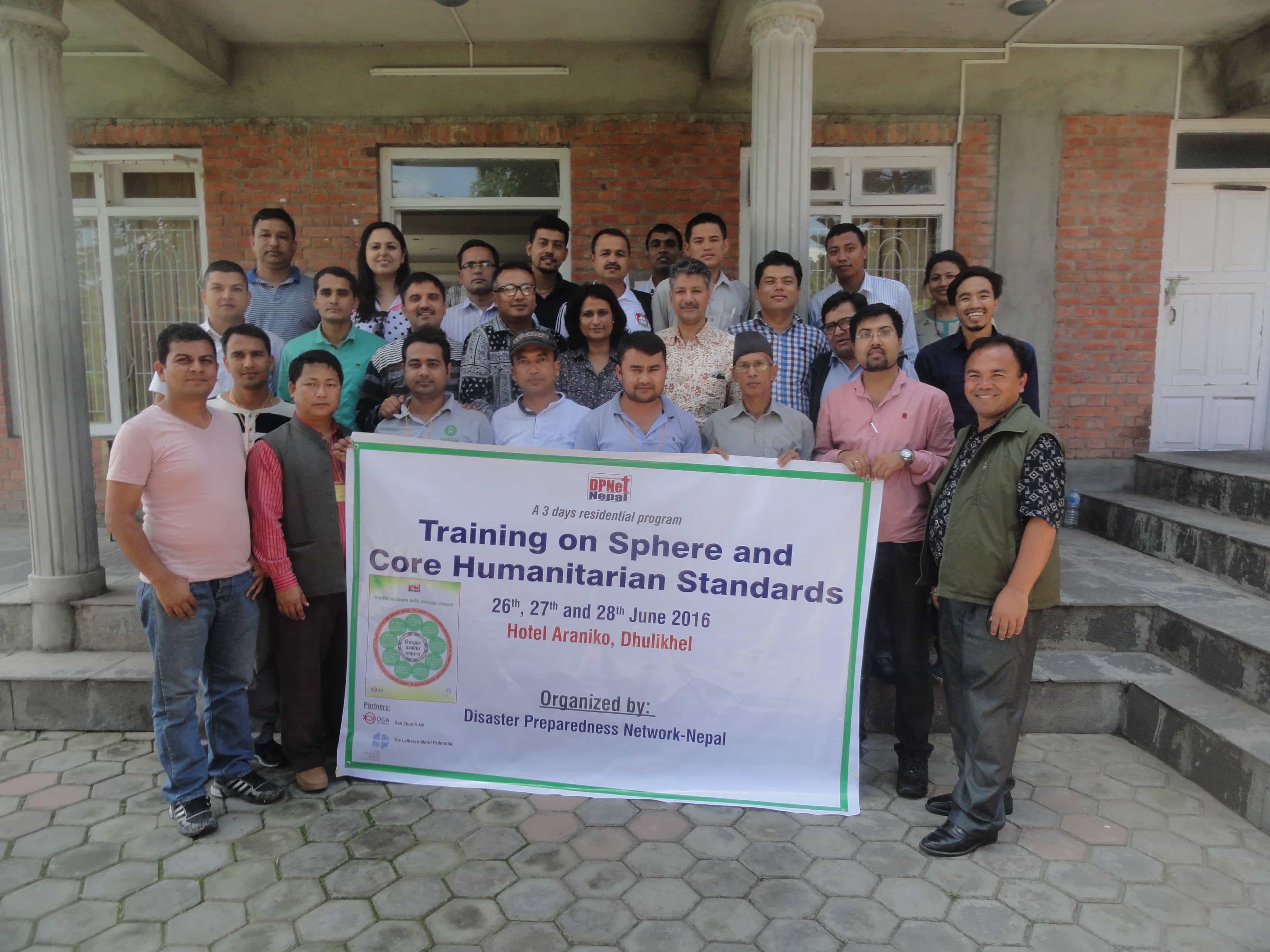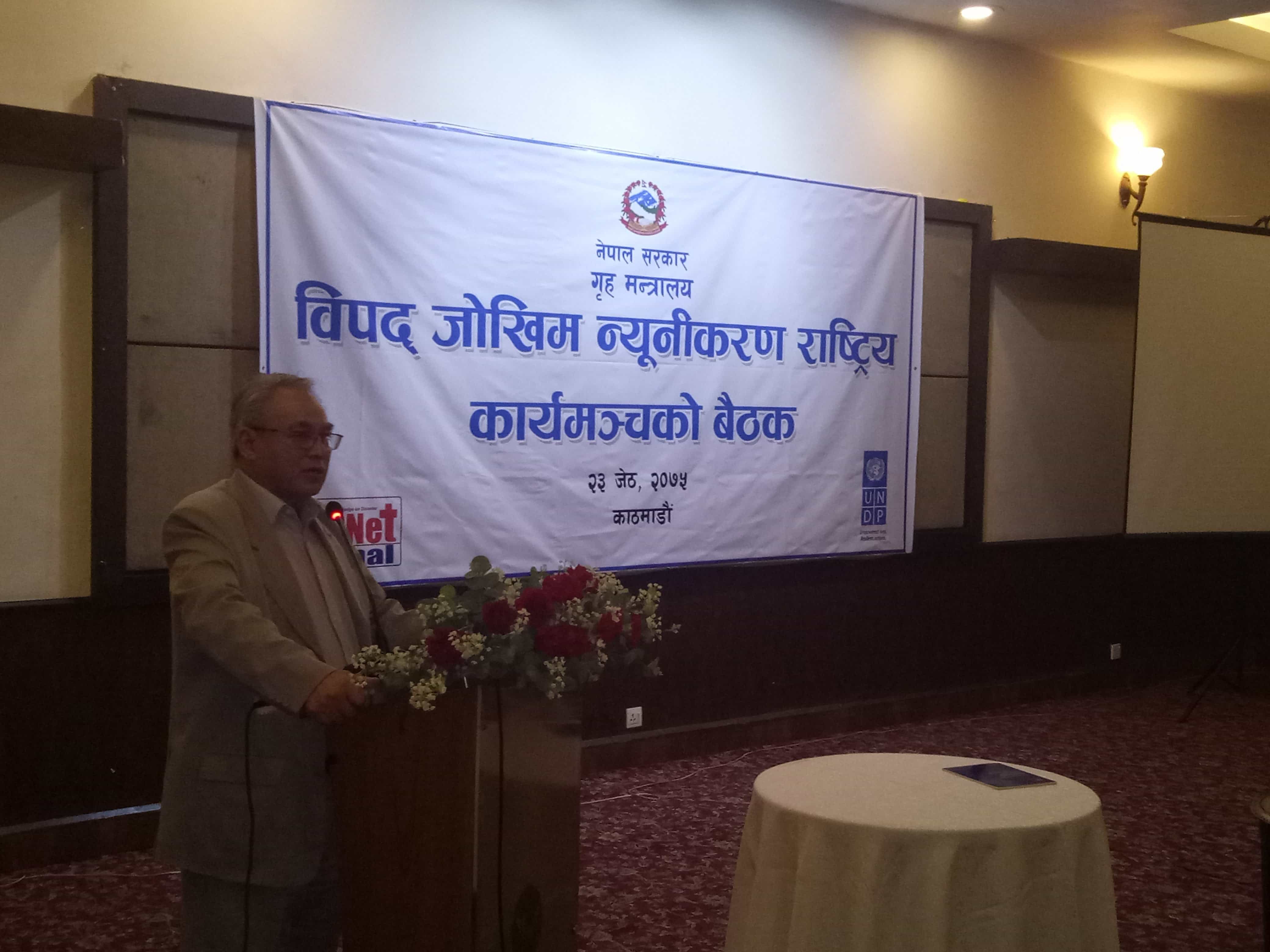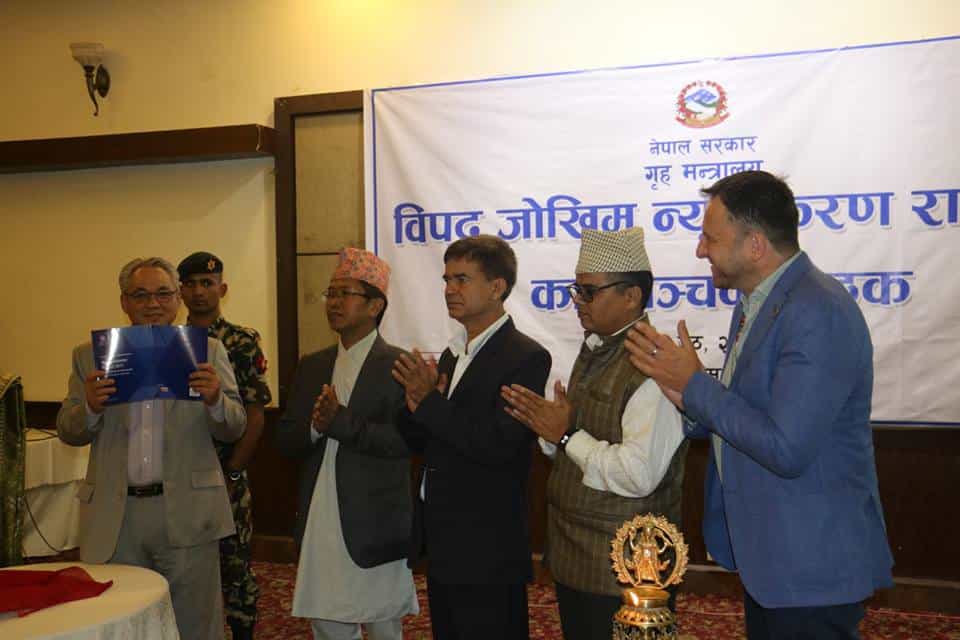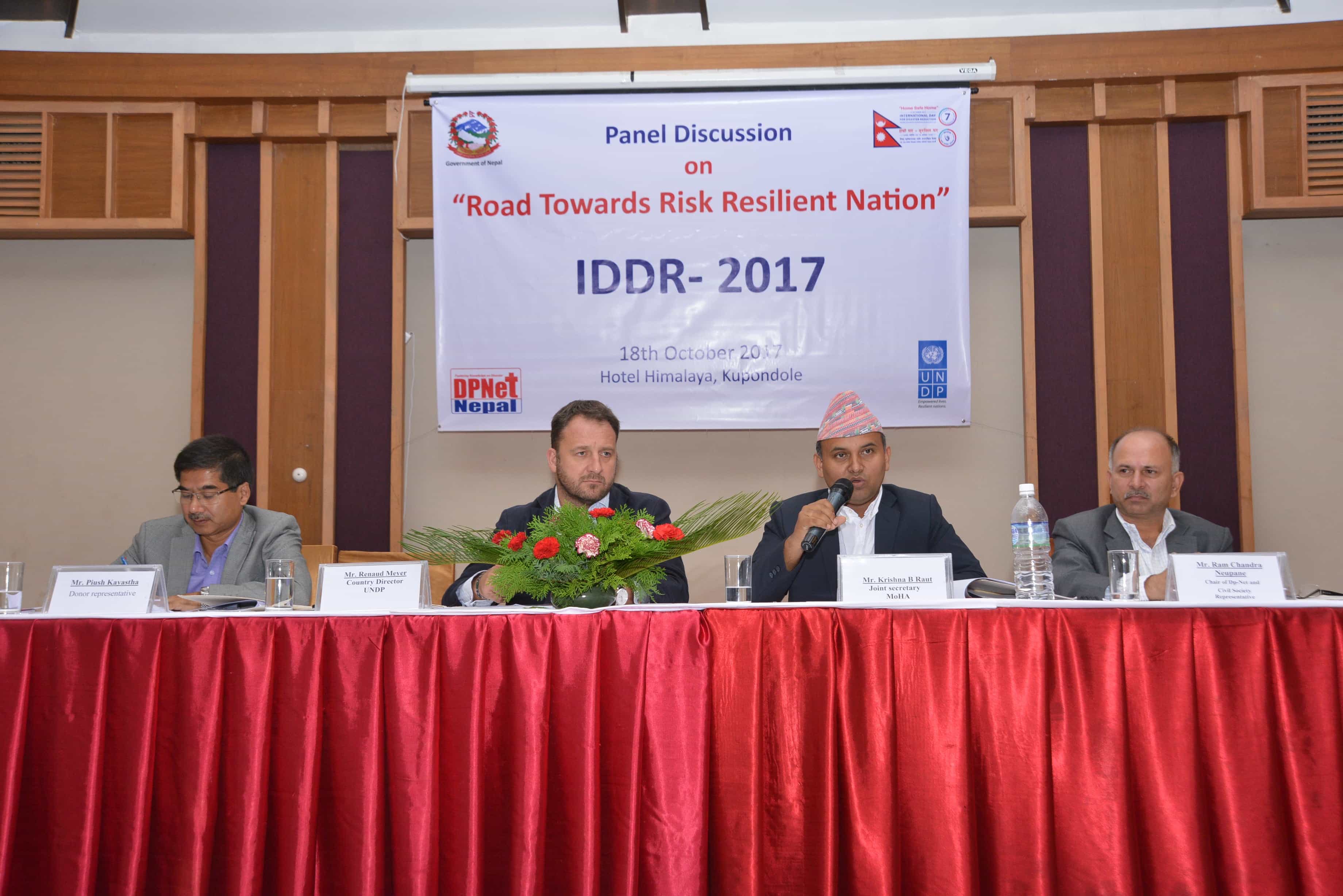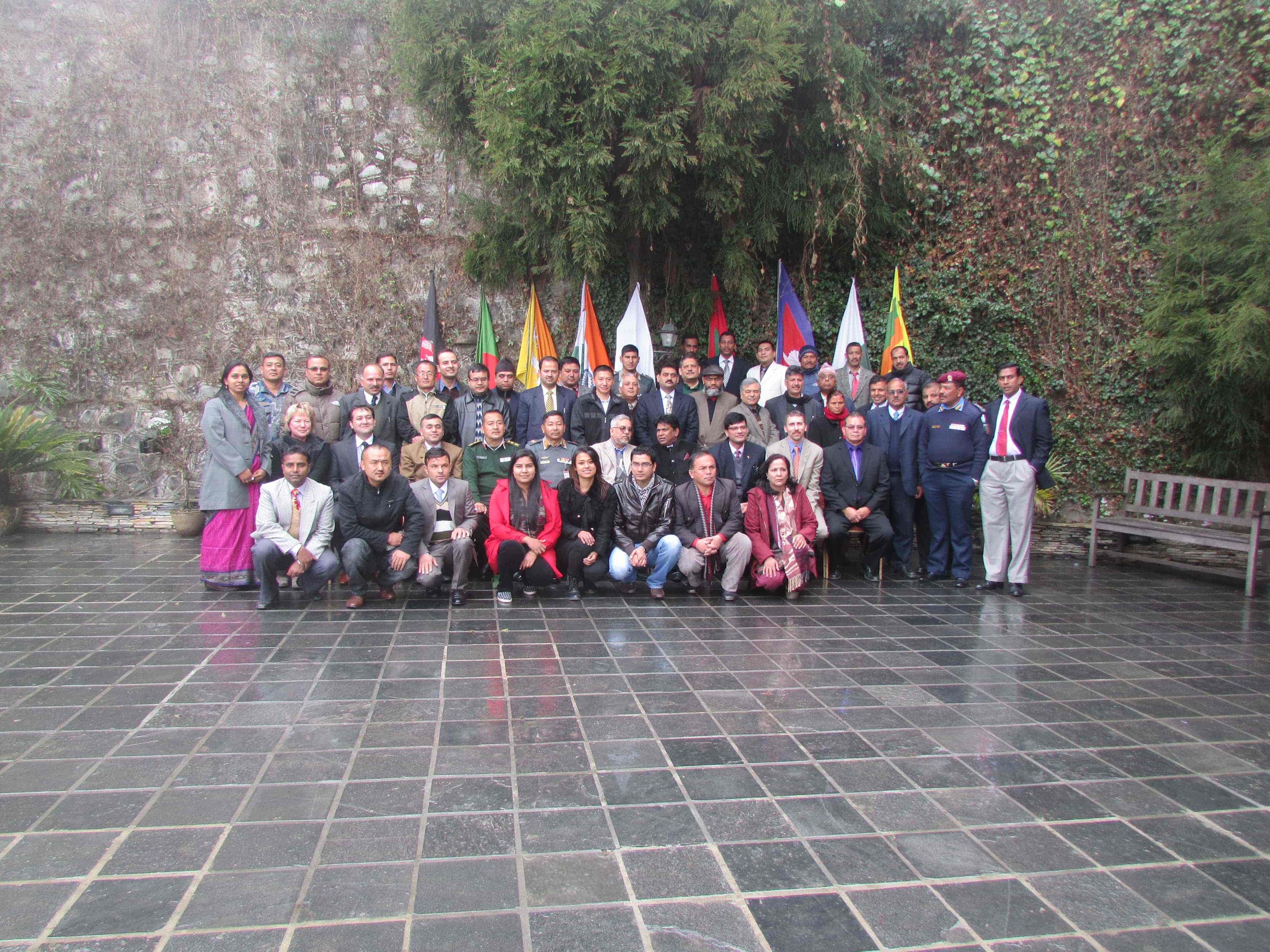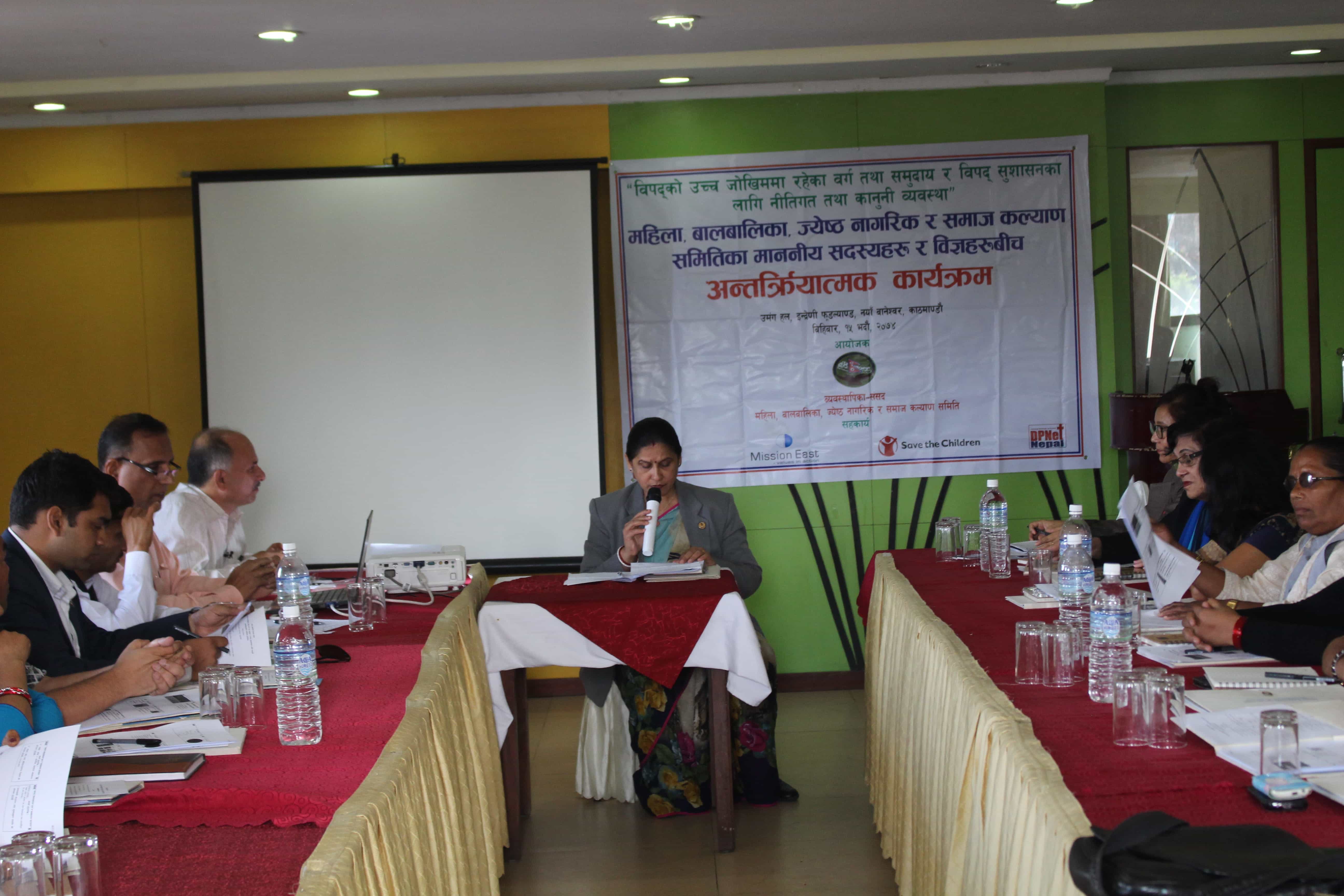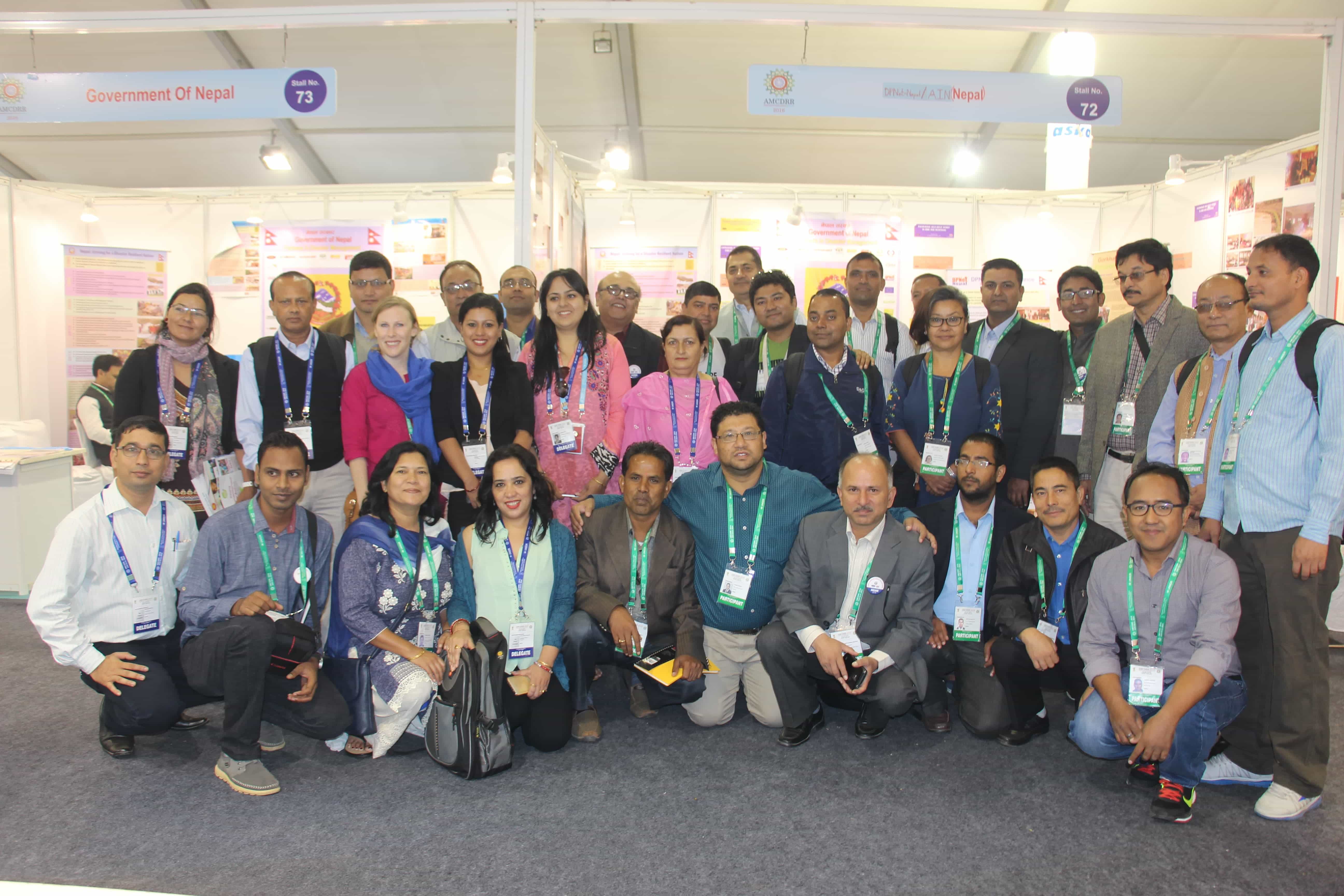Discussion Program on Insights from Gorkha and Jajarkot Earthquakes and Cost Effective Housing Solution
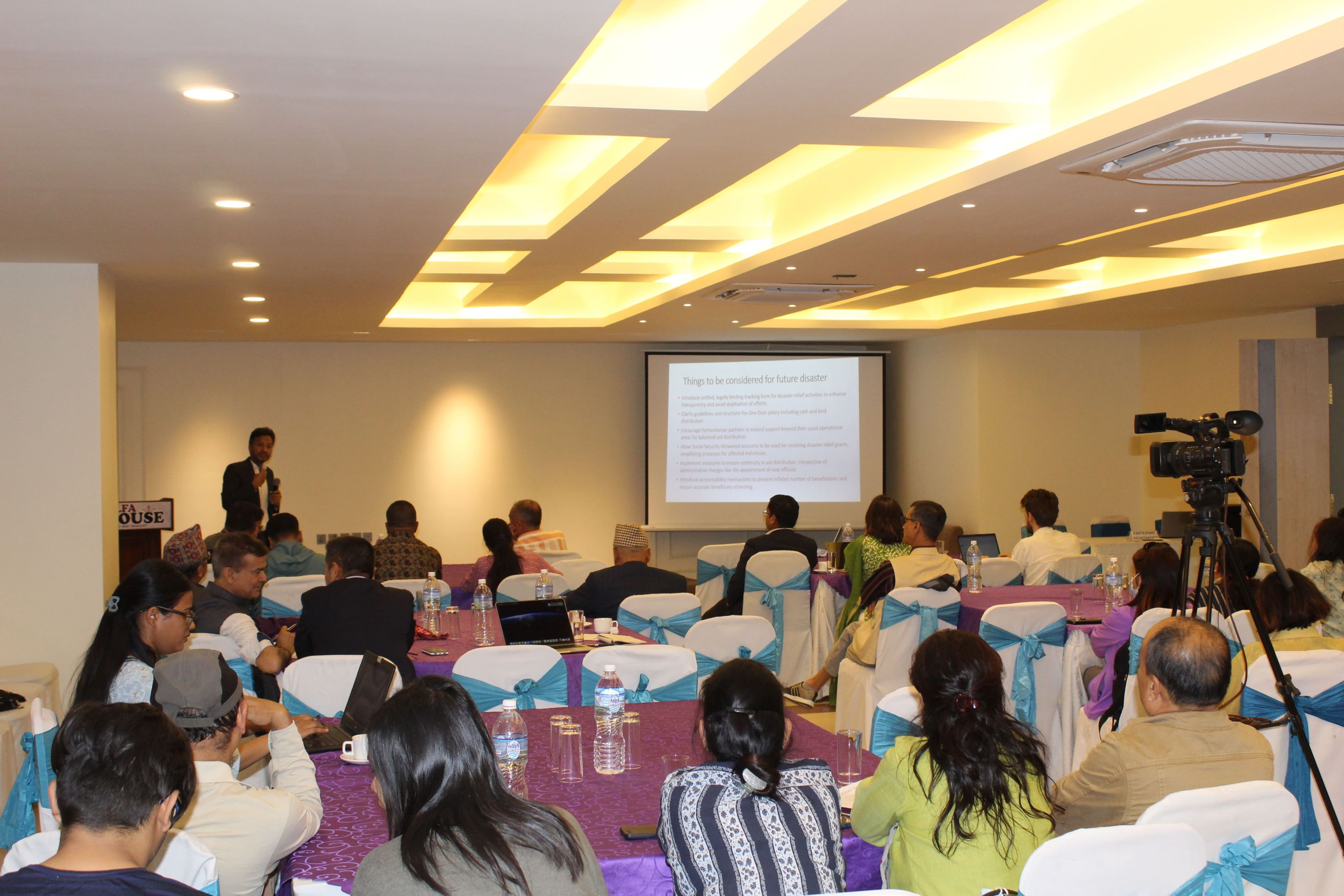
On April 18, 2024, DPNet Nepal organized an event on Discussion Program on Insights from Gorkha and Jajarkot Earthquakes and Cost Effective Housing Solution on the Technical and financial support of Habitat for Humanity, at the Alfa House, Baneshwor, Kathmandu. The event was chaired by Dr. Raju Thapa, DPNet Chairperson. The program was honored by the presence of officials from the government such as Dr. Dijan Bhattarai, National Disaster Risk Reduction Management Authority (NDRRMA), Mr. Santosh Kumar Khatri from the Ministry of Federal Affairs and General Administration (MoFAGA), and representatives from various organizations working on DRR.
Mr. Keshab Dutta Bhatta, Treasurer, DPNet Nepal, facilitated the program and shared the objective of the program as the program aims to assess lessons from the Gorkha and Jajarkot earthquakes, improve disaster preparedness, and discuss affordable housing solutions to minimize earthquake impacts in vulnerable areas. It seeks to foster collaboration among stakeholders, including experts and policymakers, to share knowledge and enhance earthquake resilience. Additionally, it aims to explore sustainable methods for rebuilding communities and infrastructure post-earthquake, while also identifying challenges and opportunities in implementing effective risk reduction measures and housing solutions in Nepal.
Mr. Surya Narayan Shrestha, NSET shared his presentation and highlighted key lessons from the Gorkha Earthquake recovery process. He emphasized the importance of governance and the need of clearly defined roles for institutions. He also mentioned that out of the total anticipated government expenses in Jajarkot, estimated at 70 billion, housing costs represented 80% of this amount. Combining private and government expenses, the total sum reaches 120 billion. However, by utilizing retrofit technology, it could potentially be accomplished at 80 Arab.
He emphasized that by integrating technology with even round stone construction methods, we can achieve resilient buildings. Retrofitting stone houses with technology is feasible. He highlighted the misconception among the general population that stone houses should be demolished and replaced with new ones, emphasizing the need to raise awareness about the benefits of retrofit technology. Mr. Shrestha also emphasized that we often overlook medium-scale earthquakes and only focus on large-scale ones, even though medium-scale earthquakes can also cause significant destruction. Since 2015, the country has shifted to an owner-driven approach to reconstruction. Now, with the country operating under a federal system, there are concerns about how to plan effectively within this governance structure and how to proceed in the future. He also highlighted another important perspective: while we calculate the amount the government provides post-disaster, the crucial question is whether Nepal can sustain these expenses. He stressed the need for a targeted approach rather than a flat one.
Dr. Raju Thapa, Chairperson, DPNet Nepal in his presentation, shared interesting facts about the Jajarkot earthquake. He discussed a progress involving an Android function within the Google system that utilized mobile phone GPS to detect seismic activity to dessimiate earthquake early warning message from seconds to minute. Dr. Thapa also highlighted the swift deployment of security measures during the Jajarkot incident. He pointed out the challenge that arises when the Prime Minister and lots of VIP visits disaster-prone areas, as the Chief District Officer (CDO) and security sectors becomes preoccupied with welcoming and managing for VIPs. Dr. Thapa further shared details about the Jajarkot earthquake, noting the prompt reestoration electricity and communication system. Regarding Jajarkot earthquake recovery, he shared that first installment of grant has been provided efficiently, but the distribution of the second installment has been delayed due to specific criteria that people need to fulfill. This bottleneck created a situation where no one got second installment to build temporary shelter even after a five months of earthquake. Additionally, Dr. Thapa provided field updates from Jajarkot, highlighting the situation of loan applications after receiving the first installment, as people hope to receive the second installment. The condition for receiving the second installment was that the house destroyed by the earthquake must be demolished. Dr. Thapa pointed out that development agencies offer assistance for building houses along with WASH facilities, whereas the Nepal government only assists in house construction. This disparity in the system leads the public to choose the option provided by development organizations over that of the government in some cases, however, many people who have choosen development partners has not got any support.
Dr. Thapa also emphasized the situation in Jajarkot, noting that incidents of women violence, school dropouts, and child labor appear to be increasing compared to previous periods. The issue of snake bites, attributed to climate change, is exacerbated by the lack of snakebite treatment centers. To mitigate snakebite incidents, people are setting up fires to kill snake in forest. He also raised concern about land fissure due to earthquake. He shared that the equal assistance provided to both small and large families, suggesting that assistance should be based on family size. There is a collective struggle to obtain accurate data, necessitating the development of a simplified, aggregated data tracking form by government agencies like NDRRMA. There is confusion surrounding the One Door Policy, highlighting the need for a clear definition of this concept which was also been highlighted by Dr. Thapa. He even emphasized the necessity of comprehensive disaster response guidelines and long-term preparedness strategies to rebuild resilient communities and prevent future disasters. He also highlighted the reality that when humanitarian partners visit earthquake-prone areas post-disaster, they often stay and focus their visits on urban and core areas, neglecting rural areas. He discussed the sensitive issue of children whose parents have died during a disaster event, emphasizing the need for proper care and responsible guardianship. Lastly Dr. Thapa emphasized on the need for urgent actions to be prepared for the approaching monsoon season, fortify shelters, and address earthquake-induced cracks.
Dr. Jib Raj Pokhrel, Advisor DPNet Nepal, in his presentation discussed the design and construction of houses following the 2015 Gorkha Earthquake. He emphasized that Nepal's primary issue is its inefficient utilization of abundant local resources. Dr. Pokhrel highlighted the importance of maintaining temperatures in termporary shelter as most of such shelter made by zinc sheet which is hot in summar and cold in winter. He shared that he just completed temporary house in Jajarkot using locally avliable resources. He emphasized the importance of bamboo due to its diverse properties suitable for structural purposes and durability. In the context of Nepal, there was a traditional practice of dipping bamboo in water as a pretreatment before construction, but nowadays, it can be treated with a borax chemical solution for similar purposes. Mud plastering and plastic are also utilized for temporary housing solutions. In his newly constructed shelter during the experimental assessment, temperatures were recorded on regular basis which recorded at least 10 degree temperature differ than outside, which makes people to make comfortable to live inside house.
Mr. Abhishek Shrestha, Engineer, Habitat for Humanity, in his presentation gave a brief introduction to Habitat for Humanity Nepal and emphasized the role of the organization in disaster management. Mr. Shrestha shared the global data which entails that conventional construction material has 22.7% contribution in global carbon emission. Bamboo has been used in Nepal for a long time as a primary construction material, often in combination with other materials in hybrid forms. Mr. Shrestha also discussed the properties of bamboo, noting that it can be utilized for construction purposes for 3-5 years old bamboo. It serves as an effective substitute for timber, being carbon-negative, lightweight, and flexible, although its strength may vary. He talked about bamboo being a safe, affordable, and sustainable housing solution, particularly vital for supporting marginalized families and disaster-affected communities. Bamboo construction is widely adopted in Nepal, with over half of households in the Eastern Terai using bamboo for their walls. He emphasized on the fact that, beyond temporary shelters, the organization has lead the design and implementation of improved bamboo house models across the country, from rural low-income residences to upscale resorts and community centers. He overviewed that Numerous research studies have been conducted on bamboo, including laboratory tests. In the past year alone, over 350 tests on two species of bamboo have been conducted at Pulchowk Engineering Campus. Despite criticisms of bamboo shelters, it is noted that traditional mud-plastered bamboo houses require re-plastering every 5-10 years, incurring additional expenses. As an alternative, constructing bamboo houses with minimal use of cement offers a viable option.
He also attempted to highlight the challenges that persist due to an informal and non-regulated bamboo construction market, including concerns over bamboo quality and safety standards. Also challenge with bamboo is the absence of a grading system, which makes it difficult to assess the extent of cracks and determine whether they are suitable for housing purposes. To address these issues, efforts are underway to establish a National Bamboo Guideline, develop the bamboo market system, engage the private sector, expand bamboo research, and foster collaboration with academia. He also highlighted that these initiatives aim to enhance bamboo construction’s safety, reliability, and performance while promoting its broader adoption as a sustainable housing solution in Nepal.
Q&A session
- Mr. Ram Prasad Bhandari, Advisor, DPNet Nepal, emphasized the effectiveness of an owner-community-driven approach to housing in Nepali context. He highlighted Nepal's traditional culture of self-help but noted that in developed countries with strong governments, community-driven initiatives may not be as successful. Mr. Bhandari also emphasized the importance of prioritizing school reconstruction within such forums. Despite Nepal's adoption of a fancy and sophisticated school building system, the issue arises as many schools are now merging due to declining student numbers. While this may benefit related stakeholders, it will also increase the public burden.
- Mr. Rabin Dahal, Executive Committee Member, DPNet Nepal, expressed his interest in whether the integrated settlement practices applied after the 2015 earthquake in Nepal have succeeded, and suggested conducting research on this matter. He also raised the question of how to convince people about the importance of retrofitting. Additionally, Mr. Dahal highlighted the issue of inflated number of benificiaries in Jajarkot eartquajek being created to collect assistance funds and need to discuss strategies to address this. In Bajhang, efforts have been made to discourage the Chaupadi system, but now the huts used for Chaupadi are being utilized as temporary shelters. He also brought attention to the availability of bamboo for construction purposes.
- Ms. Rekha Shrestha, R&R Engineering Construction, highlighted that significant lessons have been learned since the 2015 earthquake. Although the building code was formulated in 1994, many people are unaware of its existence. She emphasized the importance of raising awareness at the local level and beyond, especially by communicating in local languages. Ms. Shrestha stressed the necessity of providing training to technical professionals and communities, enabling them to construct houses according to established standards
- Mr. Shyam Sundar Jnavaly, Advisor, DPNet Nepal, highlighted the tendency where we often discuss the importance of good and sturdy construction, but in reality, we tend to lean towards methods that are easy and cheap. We have learned valuable lessons from all the earthquakes experienced so far, emphasizing the urgent need to formulate a strategy to apply this learning effectively. Another important concern raised by Mr. Jnavaly was the exclusive focus on cost effective building methods, which may be suitable for marginalized and low-income groups. However, for families capable of affording proper quality and making a good investment, what could be the way forward? He emphasized that the use of technology and science must be focused.
- Ms. Chadani Hamal, Reporter, Gorkhapatra
She shared her experience of participating in such discussion programs and noted the differences in concepts. She emphasized that what could be the way out for working with both bamboo and stone for proper housing construction.
- Santa Neupane, FECOFUN inquired about the list of organizations working during the 2015 earthquake. She also highlighted the positive aspects of earthquakes, such as increased accessibility for locals to open bank accounts to get government support, people returning to villages, and emphasizing the importance of agriculture. Additionally, she raised a query regarding identifying the bamboo species suitable for construction, and the importance of widespread awareness among the people.
- Bhuwan KC, a media person, emphasized the importance of addressing issues at both the policy and field levels. He urged that immediate intervention should be taken in places where policy problems are evident. Mr. KC shared the lack of proper planning before implementing and emphasized the need for clear and well-defined planning processes with specified timeframes.
Remarks by Dr. Dijan Bhattarai, NDRRMA
He expressed gratitude to the DPNet Nepal team for organizing and inviting everyone to this important discussion session. He highlighted that we all face diverse challenges while addressing various issues. He appreciated presenters for bringing out cost effective and comfortable housing solution which will be beneficial for the reconstruction process of Jajarkot earthquake. He shared that we have been continuously bother by various diaster events so we need to think aobut risk transfer if not government is not in the position to bear the cost of disaster events. Dr. Bhattarai also emphasized the necessity for robust collaboration among stakeholders, including the three tiers of government.
Remarks by Mr. Kedar Neupane, Advisor, DPNet Nepal
He emphasized the importance of promoting indigenous technology for reconstruction and stressed whether or not the government can afford the expenses. Mr. Neupane focused that the role of a community-based approach to reconstruction might be effective.
Remarks by Mr. Surya Bahadur Thapa, Immediate Past President, DPNet Nepal
He mentioned that the program was scheduled to mark the anniversary of the 2015 Gorkha Earthquake. He emphasized the importance of requesting international assistance and funding. Mr. Thapa emphasized that the initial relief should be provided at the local level, but unfortunately, that does not happen often. He even addressed the issues that there are huge gaps in implementations and need to focus on how could we be prepared for the scenario. Also, the gaps can be observed on the sectors like livelihood, agriculture etc. Mr. Thapa emphasized that the first important things is the need of clear data and the need of targeted approach rather than the blanket one.
Closing remarks by Dr. Raju Thapa, Chairperson, DPNet Nepal
Dr. Thapa expressed gratitude to all participants for their active participation. He informed them that the reconstruction guidelines would be released before the monsoon and emphasized the significance of integrating retrofitting context by amending the guidelines in his closing statement.
